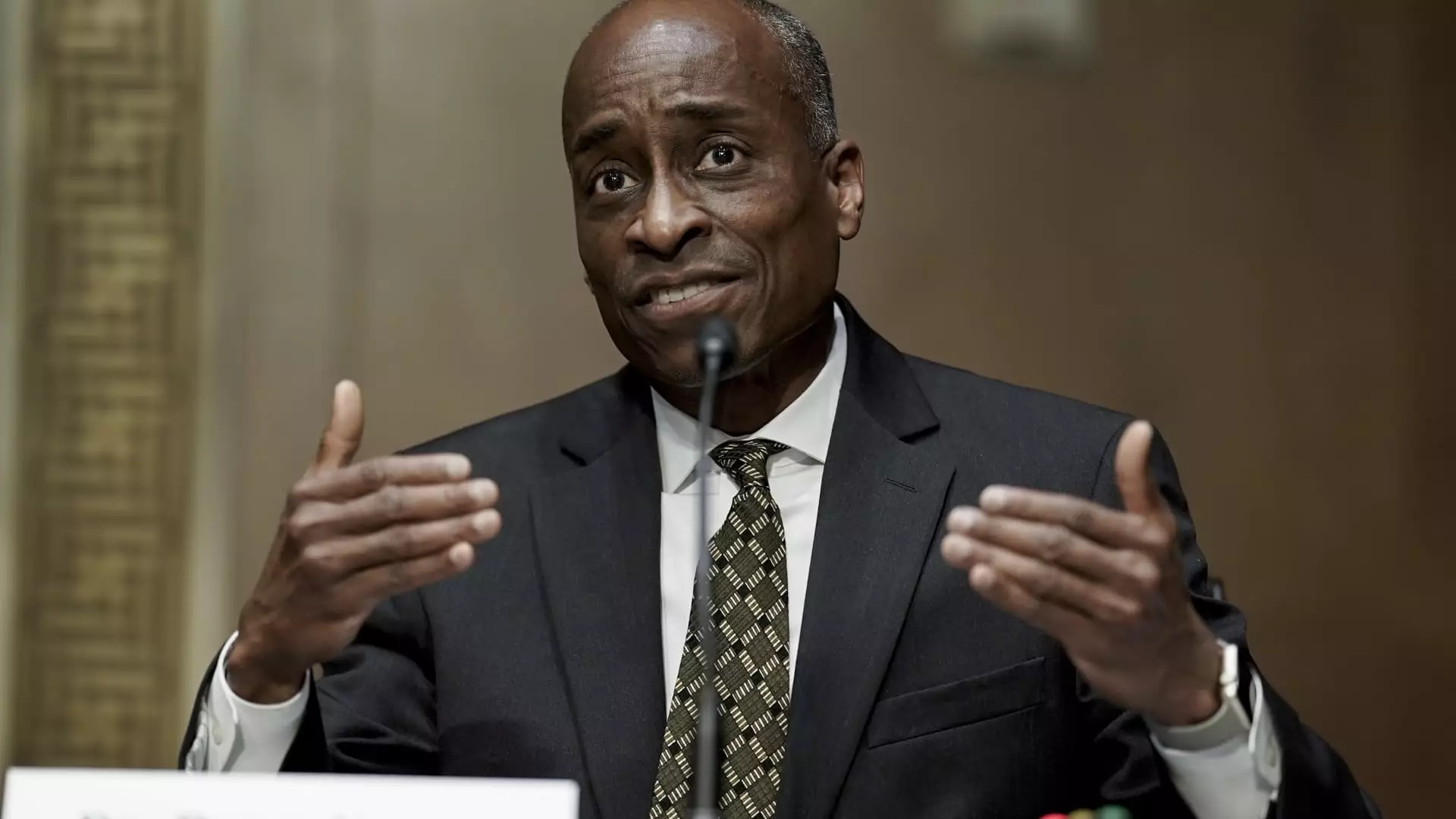In recent statements, Federal Reserve Vice Chair Philip Jefferson underscored the complexities of the present economic landscape, emphasizing the need for tempered responses from the central bank as it navigates through an uncertain policy environment. His assessment highlights a noteworthy juxtaposition—while the U.S. economy demonstrates resilience, inflation trends are revealing a slow and uneven progression towards the Federal Reserve’s 2% target. This highlights the challenge policymakers face in balancing economic growth with the persistent specter of inflation.
Jefferson described the labor market as being in a “solid position.” However, this optimistic perspective must be weighed against the broader implications of potential inflationary pressures. The Federal Open Market Committee (FOMC) remains vigilant about inflation, which, despite showing signs of moderation, continues to hover above the desired levels. This situation compels the Fed to adopt a cautious approach, ensuring that any interest rate adjustments are measured and considerate of underlying economic dynamics.
Advocating for a “cautious” approach, Jefferson’s comments resonate with a growing consensus among Fed officials regarding the pace of monetary policy adjustments. He stated, “As long as the economy and labor market remain strong, I see it as appropriate for the [Federal Open Market] Committee to be cautious in making further adjustments.” This statement encapsulates a strategic mindset aimed at preserving economic stability while allowing for flexibility in response to emerging data. Despite facing pressure to respond aggressively to inflationary trends, the consensus is to prioritize a sustainable growth trajectory.
Recent FOMC decisions reflect this cautious philosophy. The committee recently voted to maintain interest rates within the range of 4.25% to 4.5%, a choice Jefferson supported. This pause follows previous rate cuts aimed at curbing inflation; however, the Fed’s current strategy suggests a recalibration towards a more neutral monetary policy. Jefferson’s insights indicate that moving too quickly or decisively could jeopardize the existing economic balance, underscoring the importance of gradualism in monetary policy.
The economic forecast remains clouded by external uncertainties, particularly in relation to international trade negotiations. The Federal Reserve is acutely aware of how tariffs and trade policies can impact economic performance. Jefferson acknowledged these external factors, explaining that uncertainties surrounding government policies significantly complicate economic predictions. The ongoing negotiations between the U.S. and major trading partners, specifically China, are emblematic of the friction that can destabilize the economic outlook.
Moreover, the unpredictable nature of fiscal policy interactions adds another layer of complexity for the Fed. Jefferson’s contemplation of various potential scenarios regarding future policy hints at a fundamental understanding of the interconnectedness of economic variables. This holistic approach is crucial for the Fed as it prepares for scenarios that may necessitate either maintaining restrictive policies or implementing further easing based on labor market developments.
Inflation, particularly as measured by the personal consumption expenditures price index (PCE), remains a focal point of concern. Although there has been a notable decline in inflation rates—dropping to 2.6% in December—there is lingering caution regarding the trajectory of this trend. Jefferson articulates a nuanced outlook: while there are signs of easing inflation, he emphasizes the prevalent uncertainties in the current environment.
This level of uncertainty is critical to understanding the Fed’s decision-making framework. Jefferson’s acknowledgment of the possibility of prolonged policy restraint indicates a recognition that inflation can be stubborn, and the prevailing economic conditions require a delicate balance between growth and stability. Policymakers must remain agile, ready to pivot their strategies in response to unfolding economic indicators, all while maintaining the overarching goal of a well-regulated economy.
Federal Reserve Vice Chair Philip Jefferson’s insights shed light on the delicate nature of economic policymaking in an unpredictable landscape. As the economy exhibits signs of strength, the Federal Reserve is tasked with navigating a complex web of inflation, labor market conditions, and external trade uncertainties. The emphasized need for caution reflects a prudent approach to monetary policy, suggesting that while the economic recovery may be on solid footing, the path forward requires careful deliberation and strategic flexibility. Acknowledging the intricate dynamics at play, the Fed remains committed to promoting a stable economic environment while being poised to adapt as necessary.

Leave a Reply